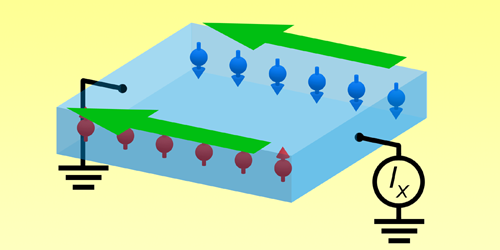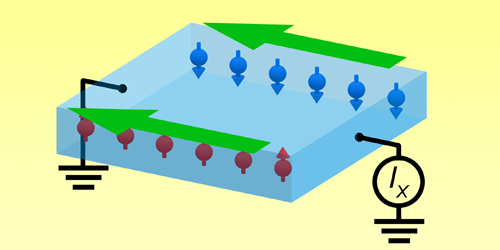Normal Metals Made to Behave Exotically
Shining strong, linearly polarized light on a crystal might be expected to cause conduction electrons to whip back and forth in response to the light’s oscillating electric field. But if the crystal structure breaks certain symmetries, a net flow of electrons can arise in one direction. The recipe for creating such photocurrents was thought to require an exotic band structure, the application of a magnetic field, or both. Now Yuichiro Ando of Kyoto University in Japan and his collaborators have observed a photocurrent in films made of single-element, nonmagnetic metals [1].
A photocurrent results from the so-called magnetophotogalvanic effect and requires two symmetries—time reversal and inversion—to be broken. The metallic crystals that Ando and his collaborators examined—copper, platinum, and tungsten—break neither. However, the researchers realized that applying a voltage across the length of the film deflects electrons sideways in a spin-dependent way via the spin Hall effect. The resulting spin-polarized currents that flow along the two edges of the film break time-reversal symmetry (because reversing time would flip the spins) and inversion symmetry (because the current differs on either side of the edge). As a result of this symmetry breaking, when the researchers shined a laser on the films, they detected an additional current—a photocurrent—flowing along the edges.
The photocurrent is nonlinear in that it depends on the square of the laser’s electric field. Although nonlinear phenomena have been explored extensively in exotic materials and devices, the single-element films studied by Ando and his collaborators are much simpler. Ando anticipates that their discovery will expand the field and challenge preconceived notions.
–Charles Day
Charles Day is a Senior Editor for Physics Magazine.
References
- T. Nishijima et al., “Spin Hall effect driven photocurrent in nonmagnetic single metals,” Phys. Rev. B 111, L140406 (2025).





